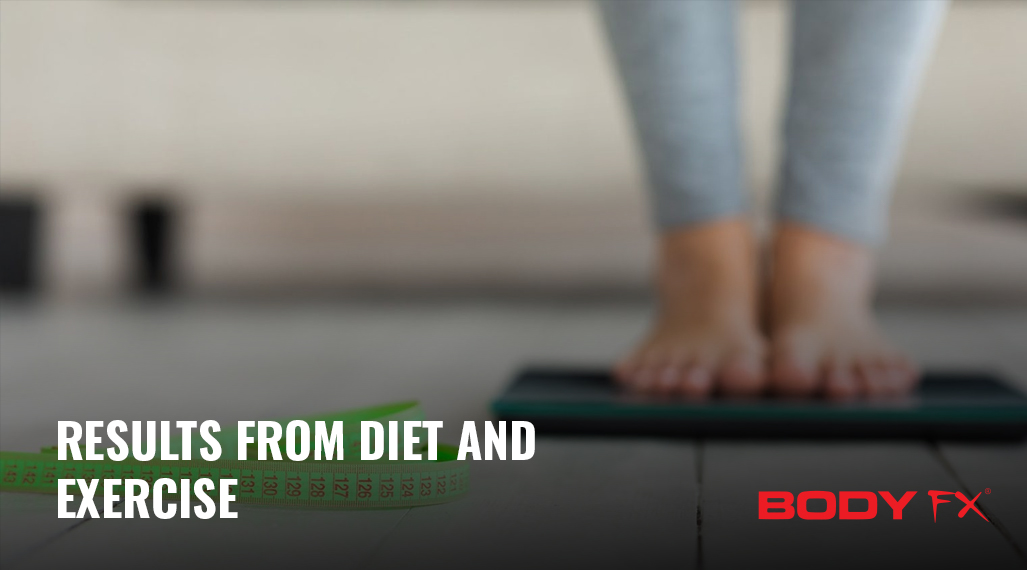There’s one universal question asked by anyone starting on a new fitness journey: How long will it take until I see results?
This isn’t a bad question by any means, but it’s not so easy to answer, since everyone is starting from a different place, faces unique challenges, and has a distinct vision of an ideal physique.
Let’s talk about some realistic timeframes for achieving fitness goals, the various factors that come into play, and what you can do to accelerate your results from diet and exercise.
Starting Points and Goals
As you might expect, there’s no one-size-fits-all answer to the question of “how long will it take to see results”. Here are some more relevant questions you might want to ask instead:
- What are my fitness goals?
- Do I want to lose weight, and how much?
- Do I want to add muscle, and how much?
- What is my ideal body fat percentage?
- What is my ideal body mass index?
- What are some other benefits I want besides a better physique?
- Do I want more energy, better mood, and higher productivity?
- What changes and sacrifices am I willing to make to achieve my goal?
- How much exercise can I incorporate into my weekly routine?
- How can I realistically make changes to my diet?
Shifting your expectations away from results-based timeframes to broader health goals can be a big help to your psychology and mental approach to diet and exercise. You’ll focus less on the hard results and more on the journey, which is key to making lasting changes.
Work closely with a trainer or join an accountability group to make sure you stay focused on the process of daily workouts and healthy eating, rather than getting caught up in the daily fluctuations of the bathroom scale or how you look in the mirror.
Realistic Weight Loss Expectations
All the shakes, supplements, commercials and New Year’s resolutions confirm that weight loss is the main fitness goal for tens of millions of Americans, regardless of age, gender or income.
If you dedicate yourself to a comprehensive weight loss program, you can expect to lose fat fairly quickly, but there are some key factors to keep in mind.
First of all, the more weight you’re carrying, the easier it will be to shed pounds right out of the gate. People carrying over 100 pounds of excess fat can safely lost between two and three pounds every week by entering a caloric deficit and doing daily exercise like power walking.
Things change a bit if you are only slightly overweight, since it’s harder to get rid of stubborn fat around the stomach, thighs, and lower back once most of the excess weight is gone.
If you’re trying to get down to that coveted 10 to 12 percent body fat range, progress will be slower, and you should expect to only lose about a pound of fat per week at most, given all your diet and exercise routines are firmly in place.
The general rule is that progress happens fast at first, then over time it becomes more difficult to see changes in your physique. That’s why it’s important to maintain a strict diet and keep pushing yourself with workouts that are progressively more demanding and intense.
Don’t get discouraged if you find your weight loss slowing down. That’s a good sign. It means that you’ve already done the bulk of the work and that you’re on the right track. To make those final strides towards perfection, it will take a bit more time than you may expect.
That being said, it takes an average of three to five weeks to see noticeable results in the mirror or on the scale, but you will likely experience increased energy and better sleep in the meantime, making your fitness journey that much easier.
How Long to Build Muscle
If you feel that you’re at a healthy weight and want to pack some lean, hard muscle onto your frame, you’ll have a different set of expectations and requirements to achieve your goals.
The good news is that you can actually lose fat and build muscle at the same time, meaning that aerobic and strength training go hand in hand and boost results simultaneously.
Scientists have discovered that increase muscle mass accelerates the human metabolism, meaning you can shed fat faster by incorporating squats, presses and ab workouts to your treadmill sessions or high-energy group dance classes.
With that in mind, you can expect to add around a half a pound of pure muscle per week when starting out, which can add up to about 2 pounds of muscle per month out of the gate.
But as we mentioned before, results will plateau once you get past the “beginner gains” phase, and it will be more difficult to add lean mass after the first six months of strength training. That doesn’t mean you should hit the brakes, however, since weightlifting will help you keep fat off of your frame and increase your daily energy levels.
If you find the sweet spot between aerobic cardio workouts and strength training, you will set yourself up for optimal weight loss and muscle building and accelerate results early on.
Ongoing Maintenance and Health
Way too often, folks will achieve their specific fitness goal after a few months or years, then quickly revert back to their old habits and watch their results slip away.
It’s vitally important that you maintain the same level of discipline from day one, and realize that results can disappear even quicker than they came.
That may mean you need to sign up for a group fitness challenge, like BodyFX, to keep you accountable, or hit the gym daily with a friend who won’t let you off the hook.
This becomes difficult when you reach plateaus in performance and physical appearance since you can take these things for granted as you enjoy living a healthier lifestyle and looking great in those new clothes.
4 Tips to Stay on Track
Whether you’re just getting started on your fitness game plan or you’ve been at it for years, there are always a few useful tips to keep in the front of your mind.
1. Make a List of Do’s and Don’ts
Identify the triggers that tend to throw you off course. It could be work-related stress, relationship troubles or a pizza commercial. Pinpoint your specific moments of vulnerability and set up strategies to avoid falling back into bad habits.
2. Track Progress Using Technology
Browse the app store on your phone or computer to unlock a whole world of amazing fitness tech that lets you track your progress.
You may not feel compelled to track each and every calorie, but at the very least you should keep a digital diary of your workouts and general habits, positive and negative.
It’s also worth purchasing a digital scale that records key metrics like body fat percentage, water weight and muscle mass, so you can get deeper insights into your body composition over time.
3. Give Yourself a Break
Some of us are likely to catch the fitness bug and stay super-focused on results for weeks or months at a time. It’s great to harness that motivation, but burnout is an inevitability.
That’s why you should occasionally give yourself a day off from the gym and enjoy some of your favorite comfort foods while you sit back and relax on the couch.
Common wisdom in the fitness world says that you can enjoy a “cheat day” once a week to reset your metabolism and allow your body to recover from all that hard work. Just don’t let one cheat day turn into two, because it may become a cheat week or month in the blink of an eye!
4. Be Aware of Side Benefits
Don’t let your body weight or your self-image dictate your progress, especially when you’re just getting started on a diet and exercise regimen. Like we said before, being too results-oriented can end up doing more harm than good.
It may be weeks before you see real, quantifiable progress, so focus on other things like your energy levels, mood, and productivity in other areas of your life.
Pay attention to how you feel during the day and how you carry yourself with more self-confidence than before. Once the pounds start coming off and you begin to tone up, you’ll have the shining personality to match that sleek new look.
Conclusion
Our society is very preoccupied with numbers and data, which is why we work so hard and view the world analytically.
When it comes to your health and fitness, however, it’s crucial that you give yourself credit for each little bit of progress, even if it doesn’t seem like a big deal.
Be your own cheerleader, and recruit friends and family to come on the journey with you! You’ll be surprised how much your life can change in just a few months.








